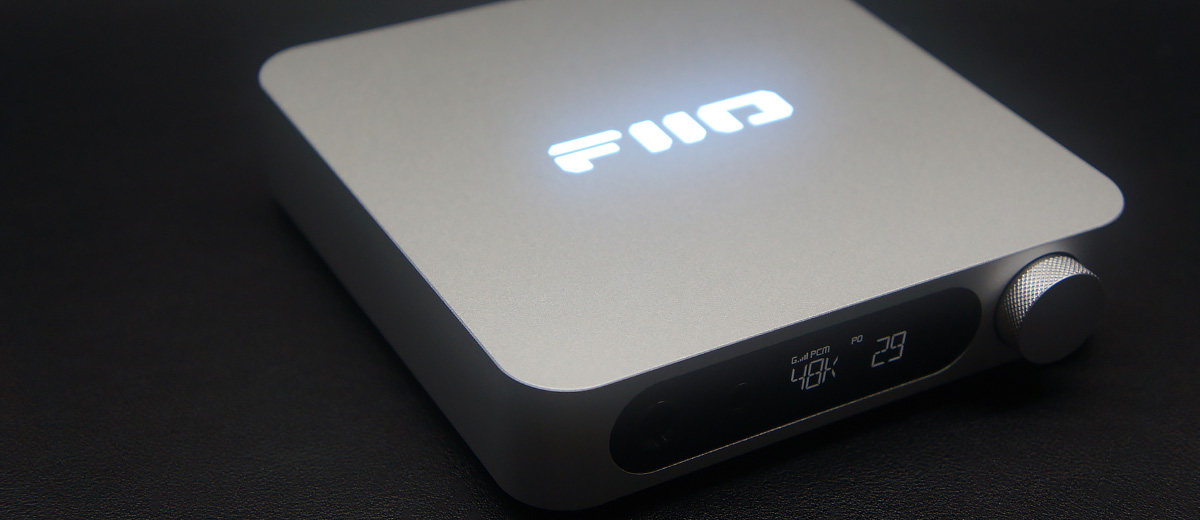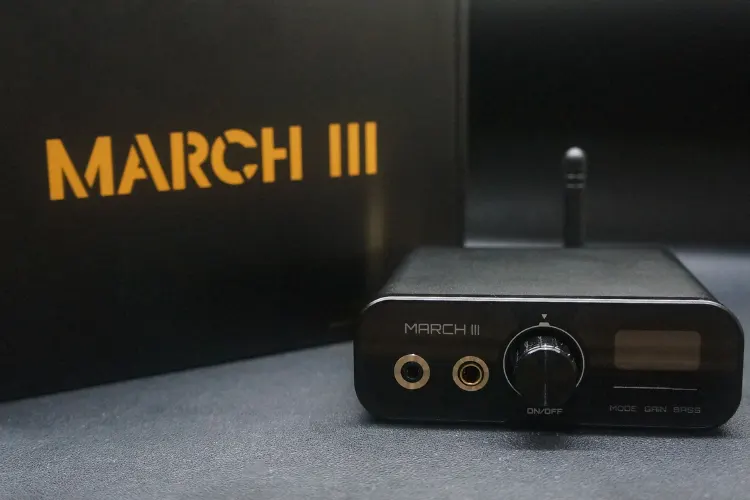Synergy
Power/Efficiency
The K11 is a powerful and efficient DAC and headphone amplifier that can drive a wide range of headphones.
I would like to emphasize how even as recently as 5-7 years ago, some audiophiles used speaker amps to power the Modhouse Argon MK3 headphones. However now, I am perfectly satisfied with driving them from a sub-$150 DAC/amp.
When connected to the K11’s balanced output, it was able to drive the Sennheiser HD 580 Precision to a more than satisfactory level at just medium gain at around 35% volume.
The K11 can handle high-impedance and hard-to-drive headphones without any distortion or clipping. The K11 has a low noise floor and a high signal-to-noise ratio, which makes it suitable for quiet and critical listening.
Similarly, it was able to drive my Modhouse Argon MK3 to a satisfactory listening level at around 40% at the high gain mode. With both headphones, I did not experience any degradation in sound quality or staging.
At the low gain setting, the K11 was able to easily drive IEMs such as the Yanyin Canon II and the Moondrop Blessing 3 without any audible hiss.
Pairings
The K11 shines when paired with headphones and IEMs that not only maximize the juice it can offer but also have an existing tonality that the listener wants to remain uncolored.
For my use case, I highly recommend pairing the Argon MK3 with the K11. It maintains the dark yet detailed sound signature I loved about the Argons, only at a more affordable price point.
Additionally, I was pleased with how much more frequently I was using my Argons since I no longer needed to pair them with my system composed of a separate DAC and AMP.
The HD 580 paired with the K11 maintained a natural tonality, however, I personally prefer pairing the HD 580 with warmer sources to give the mid-bass to lower mids a richer and fuller signature, while toning down the highs a little.
I experienced no hissing at all from the Yanyin Canon II when listening via the Low gain mode. The already good imaging performance of the Canon 2 was maintained, and so was the fun-sounding tonality. I did not notice a sound quality increase when comparing the K11 to a Balanced dongle such as the ddHiFi TC44Pro.
The flat and neutral tonality of the Moondrop Blessing 3 was maintained. I prefer listening to the Blessing 3 with sources that give it a slight bump in the top end such as the iFi Audio ZEN Can.
I noticed a slight improvement in the imaging performance when pairing the Blessing 3 with the K11, however, I placed a higher value on the bass bump.
Select Comparisons
The following comparisons were completed using the Modhouse Argon MK3 and the Yanyin Canon II for pairings.
iFi Audio ZEN DAC V1
Technical
The K11 sports a Cirrus Logic CS43198 DAC chip and dual SGM 8262 amplifiers and supports PCM up to 32-bit/384kHz PCM and DSD up to DSD256.
The iFi Audio ZEN DAC V1 features a Burr-Brown True Native chipset that supports PCM and DXD up to 32-bit/384kHz, and DSD256 as well.
The ZEN Dac only has a sole USB-B input connector, compared to the USB, coaxial, and optical inputs of the K11.
Both units have 6.3mm SE outputs, 4.4mm Balanced outputs, and rear RCA outputs. However, the K11 has additional coaxial output, while ZEN also has an additional 4.4mm balanced output at the rear.
The K11 has an output power of 520mW and 1400mW @32Ω on 3.5mm SE and balanced 4.4mm respectively.
The ZEN DAC has an output power of 280mW and 380mW @32Ω on 3.5mm SE and balanced 4.4mm respectively, making the K11 substantially more powerful. The ZEN’s Balanced output power is substantially lower than the SE output of the K11.
Additionally, the ZEN DAC comes with a TrueBass option that elevates the low end, while the K11 does not come with any additional tuning options outside of the DAC filters.
Design
The iFi Audio ZEN DAC V1 has a more stylish and eye-catching design than the FiiO K11, which may appeal to some users who prefer a more aesthetic and elegant look.
The iFi Audio ZEN DAC V1 has an aluminum body with a curved shape and a silver color, while the FiiO K11 has an aluminum alloy body with a rectangular shape and a matte finish.
Both units occupy almost the same amount of desk space, but I found that it was easier to stack a separate amplifier on top of the K11 as opposed to the ZEN.
The iFi Audio ZEN DAC V1 has a colored LED ring around the volume knob, while the FiiO K11 has a high-resolution VA display that shows the input source, sample rate, volume level, and gain setting.
The ZEN DAC V1 has a larger volume knob than the FiiO K11, which may affect the precision and ease of use.
Performance
The substantially higher output power of the K11 simply outclasses the ZEN DAC. Both my HD580 and Argons sounded more dynamic, and detailed, and had better imaging performance on the K11.
However, for easier-to-drive headphones or IEMs that can be maximized by both amplifiers, the iFi Audio ZEN DAC had a warmer “lush” tonality compared to the more neutral tonality of the K11.
TempoTec March III M3
Technical
The TempoTec March III M3, features the AKM AK4493S DAC chip supporting PCM up to 32-bit/768kHz and DSD512, in addition to supporting MQA decoding, with 4 OPA1688 op-amps.
On the other hand, the K11 sports a Cirrus Logic CS43198 DAC chip and dual SGM 8262 amplifiers. The K11 does not natively support MQA decoding and only supports a narrower range of PCM up to 32-bit/384kHz PCM and DSD up to DSD256.
The TempoTec M3 has a single-ended 3.5mm output instead of a 6.35mm output, which may limit the compatibility with some headphones that have a larger plug. Both Units have a 4.4mm Balanced out, RAC Line out, and Coaxial out. However, only the M3 supports optical out.
For inputs, both units support USB input, however, the K11 can accept coaxial inputs, while the M3 can accept Bluetooth inputs.
Additionally, the M3 comes with a bass boost option that elevates the low end, while the K11 does not come with any additional tuning options outside of the DAC filters.
Design
The TempoTec M3 has a narrower but taller design than the FiiO K11, which may appeal to some users who prefer a smaller footprint on their desktop.
I prefer the chassis of the M3 as a solo unit since it takes up less desktop space, but this does make stacking a separate amplifier on top of it more difficult as compared to the K11.
The TempoTec M3 has a metal body with a black color, while the FiiO K11 has an aluminum alloy body with a matte finish and two color options. The TempoTec M3 has a smaller volume knob than the FiiO K11, and the knurling on the K11’s knob is a significantly more premium feeling as well.
Performance
The TempoTec M3 has a warmer and smoother sound signature than the FiiO K11, which may suit some users who prefer a more such a pairing for their headphones. The TempoTec M3 adds some warmth and body to the sound, while the FiiO K11 maintains a neutral and transparent presentation.
The significantly higher power output of the K11 makes harder-to-drive headphones sound more dynamic than plugging them into the M3.
The TempoTec M3 has smooth and natural imaging, while the FiiO K11 has precise and accurate imaging.
In my testing, I slightly preferred the HD580 Precision more on the M3, since I like a little more warmth on its existing sound signature, but I preferred the Modhouse Argons on the K11 since I’m already a fan of its out-of-the-box tonality.
Our Verdict
At $129.99 the K11 integrated DAC and headphone amplifier is a bit of a no-brainer. An affordable desktop DAC/AMP that can deliver excellent power with a very neutral tonal quality is impressive.
It is a well-built piece of audio equipment, that also gives users the chance to add some RGB flair, or maintain a stealthy aesthetic, all within its convenient user interface.
It may not have nice-to-have features such as Bluetooth connectivity, or suit those who like a warm sound signature, but it does its job of powering headphones extremely well.
The K11 has my full recommendation. I only wish it came out much sooner since it essentially replaces multiple amps and DACs in my humble collection, at a lower price.
FiiO K11 Specifications
- DAC/AMP Chip: Cirrus Logic CS43198/dual SGM 8262
- Output Power: 520W@ 32Ω (SE), 1400mW @ 32Ω (BAL)
- Input(s): USB, Coax, Optical
- Output: 6.3 mm SE, 4.4 mm BAL, RCA, Coaxial,
- Playback USB: 32bit/384kHz, DSD256






